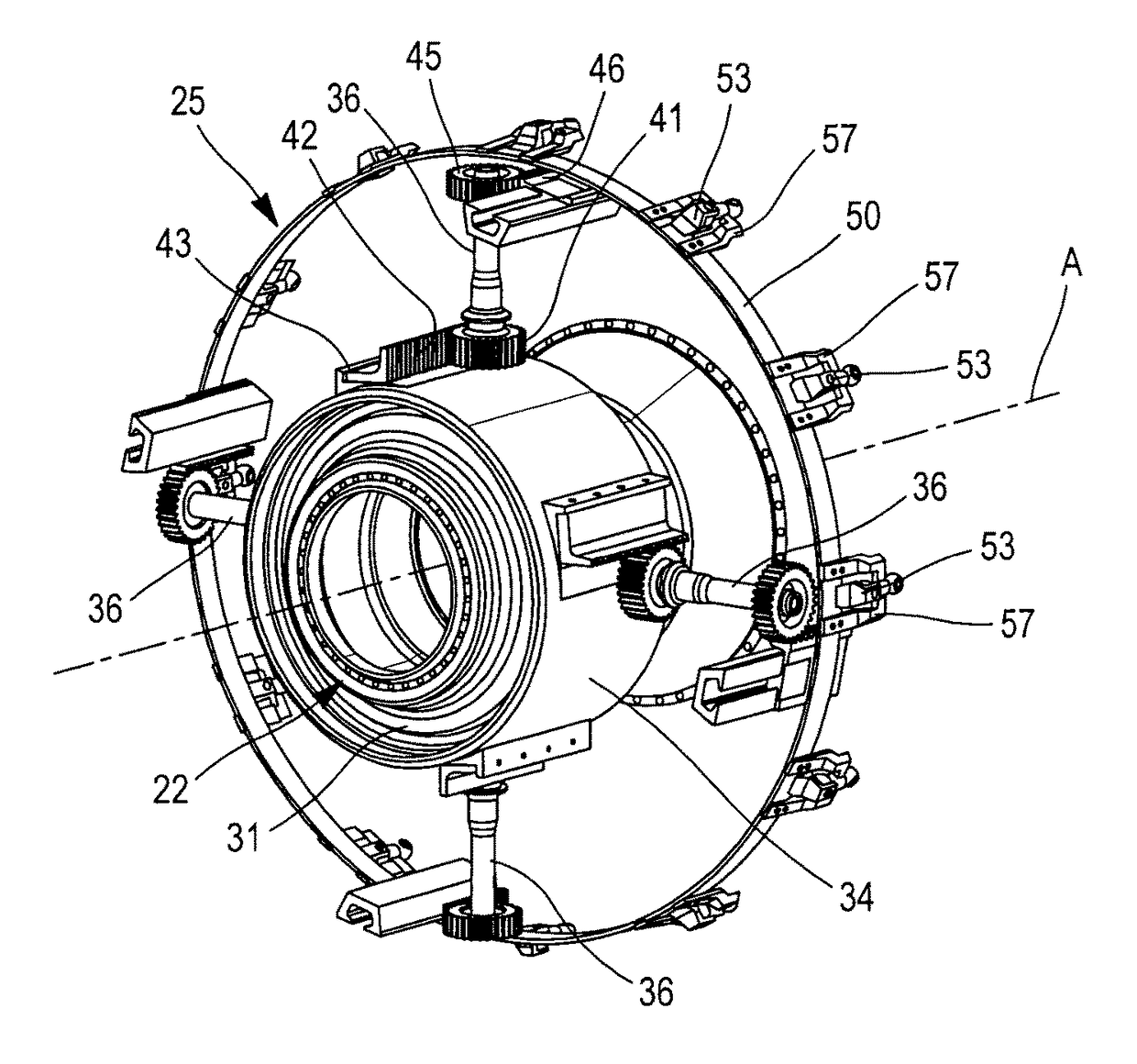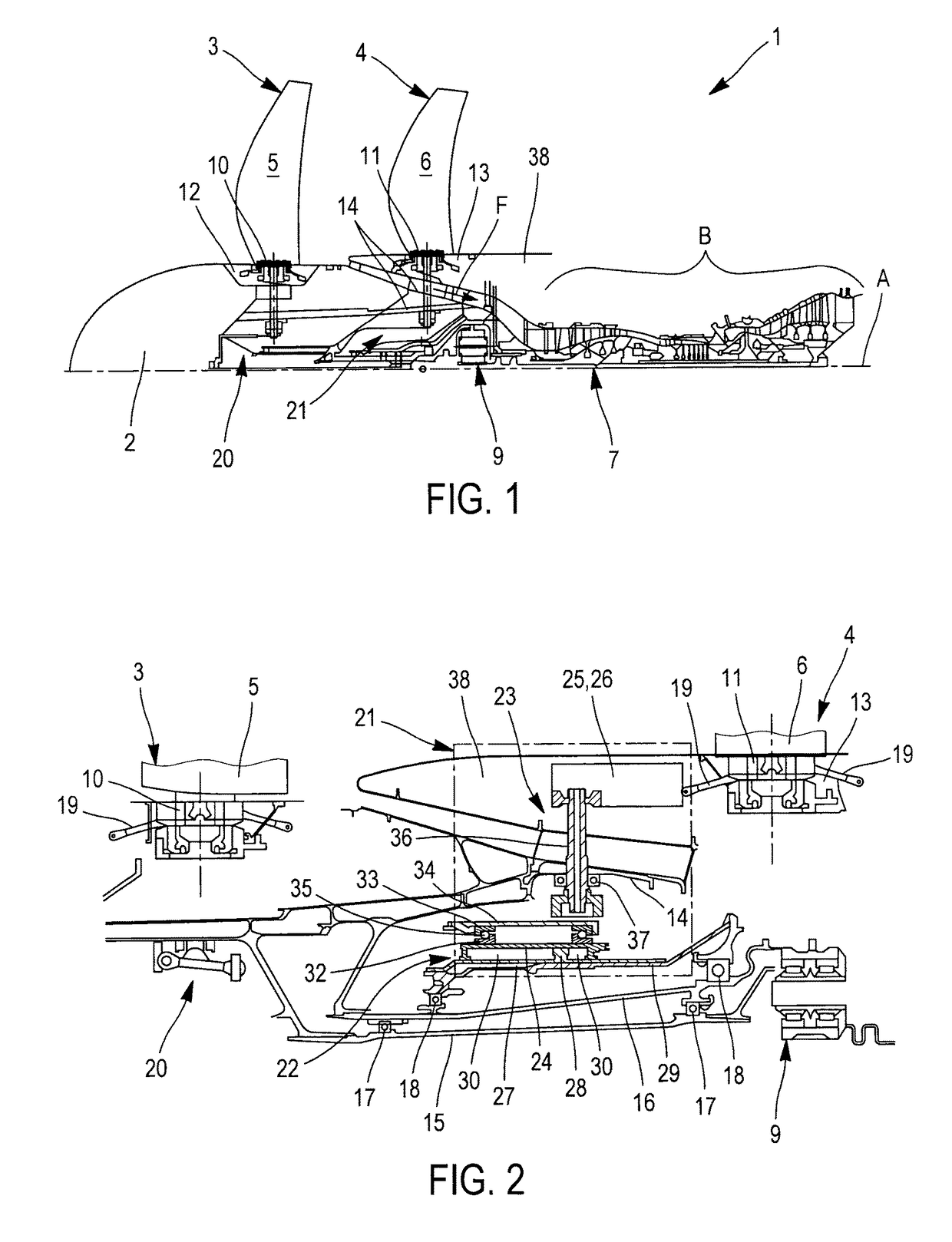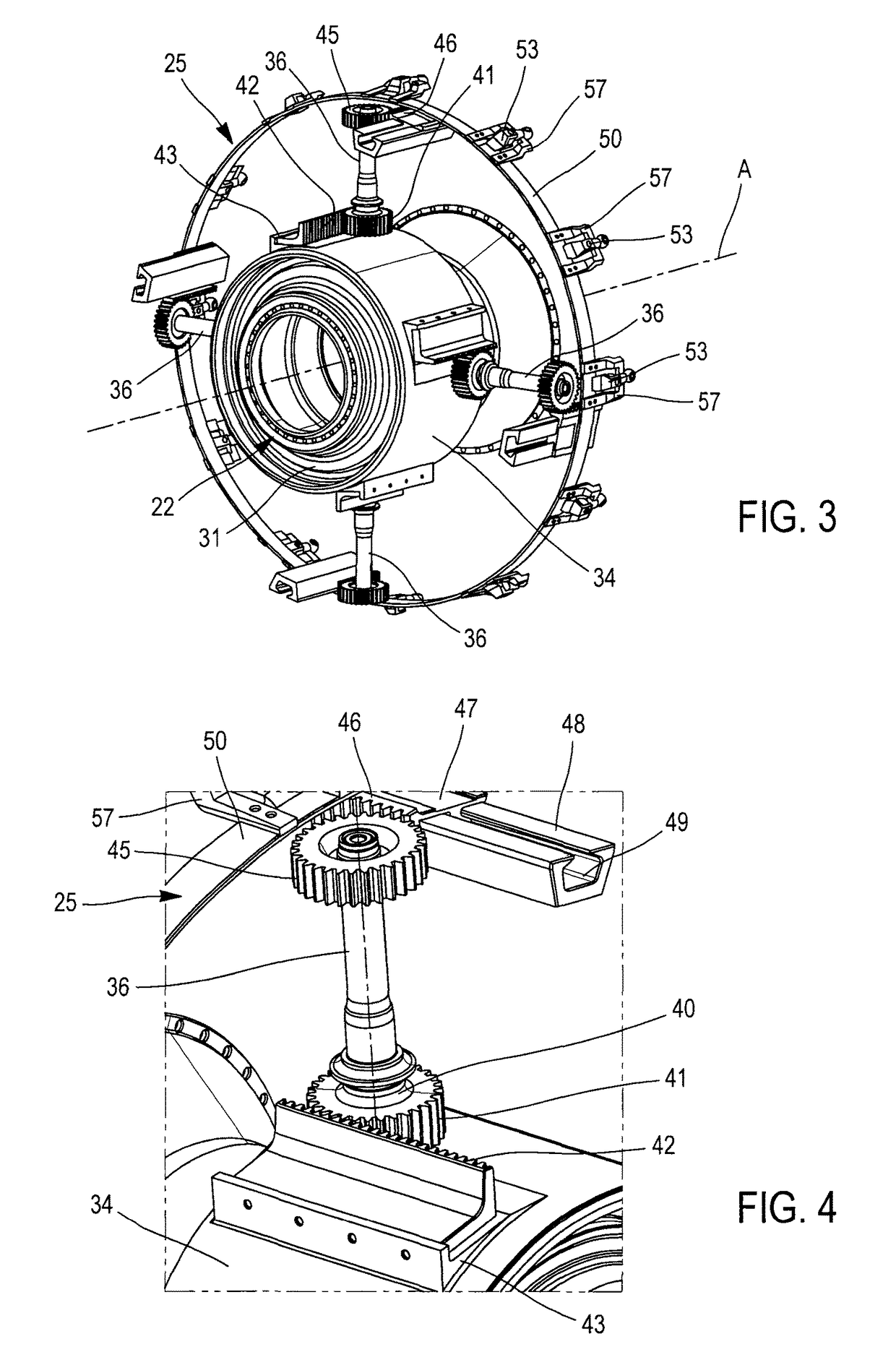System for changing the pitch of the blades of a propeller
a technology of blades and propellers, which is applied in the direction of rotors, machines/engines, liquid fuel engines, etc., can solve the problems of too many leakage risks, and achieve the effect of preventing high magnitude aerodynamic forces
- Summary
- Abstract
- Description
- Claims
- Application Information
AI Technical Summary
Benefits of technology
Problems solved by technology
Method used
Image
Examples
Embodiment Construction
[0032]The turbomachine 1 depicted in FIG. 1 is a turbomachine with an upstream unducted fan, referred to more commonly in English as an “open rotor puller”, of longitudinal axis A.
[0033]Provided at the front 2 of the turbomachine 1 are two propellers 3, 4 that are coaxial about the axis A and counter rotating, forming the fan and the blades 5, 6 of which can be set at variable pitch angles to suit the various phases of flight, including taxiing along the ground, described hereinabove and encountered by the airplane equipped with these turbomachines.
[0034]As already indicated, the entire pulling front part 2 of the turbomachine is therefore able to rotate about the axis A and in order to do so is driven by the gas generating part 7, which is therefore downstream, where the compressors, combustion chamber and turbines indicated under the reference 8 can usually be found. The stream of air entering the part 7 is symbolized by the arrow F.
[0035]As shown by FIG. 1 and notably by FIG. 2, ...
PUM
 Login to View More
Login to View More Abstract
Description
Claims
Application Information
 Login to View More
Login to View More - R&D
- Intellectual Property
- Life Sciences
- Materials
- Tech Scout
- Unparalleled Data Quality
- Higher Quality Content
- 60% Fewer Hallucinations
Browse by: Latest US Patents, China's latest patents, Technical Efficacy Thesaurus, Application Domain, Technology Topic, Popular Technical Reports.
© 2025 PatSnap. All rights reserved.Legal|Privacy policy|Modern Slavery Act Transparency Statement|Sitemap|About US| Contact US: help@patsnap.com



